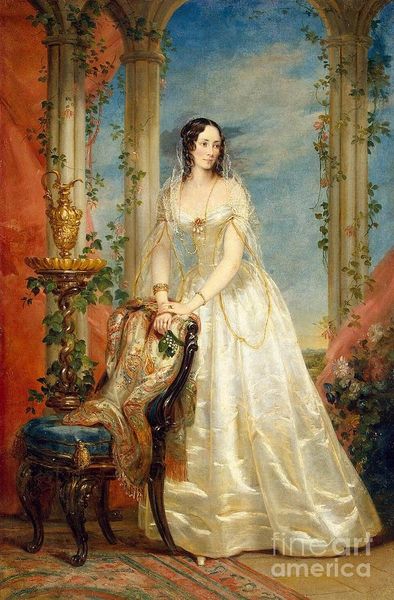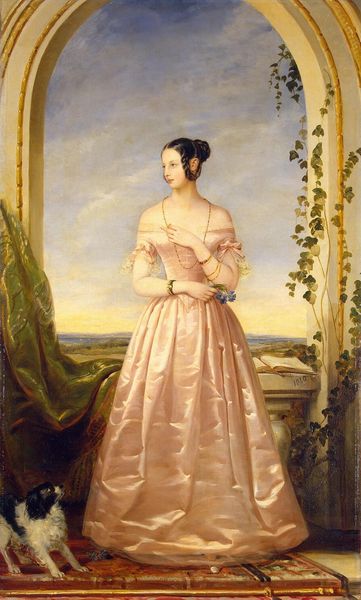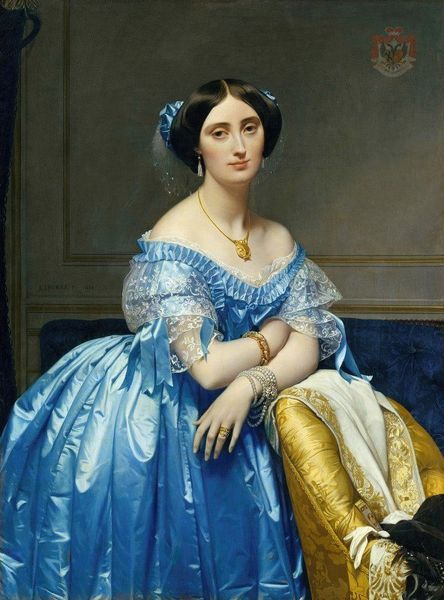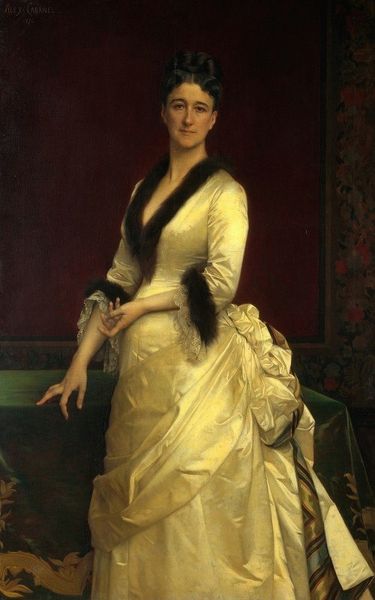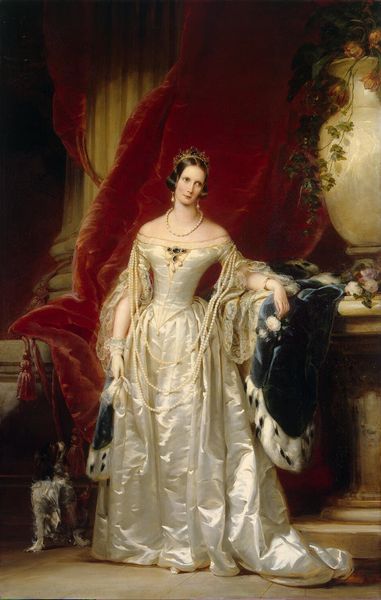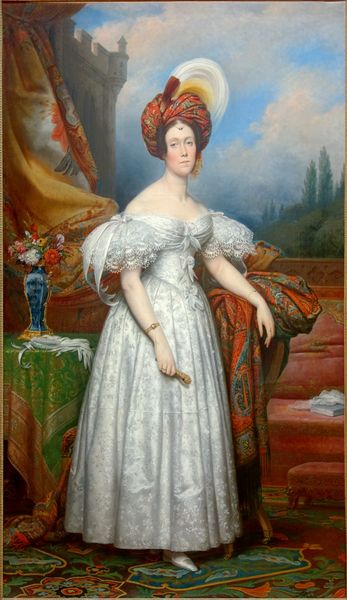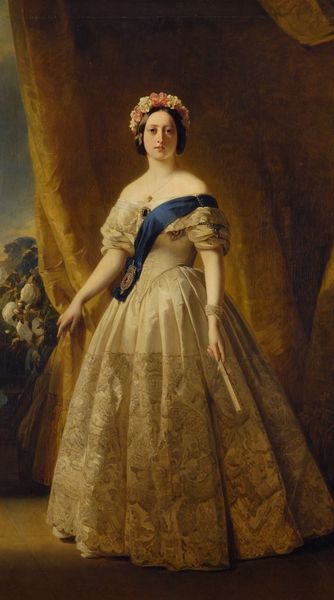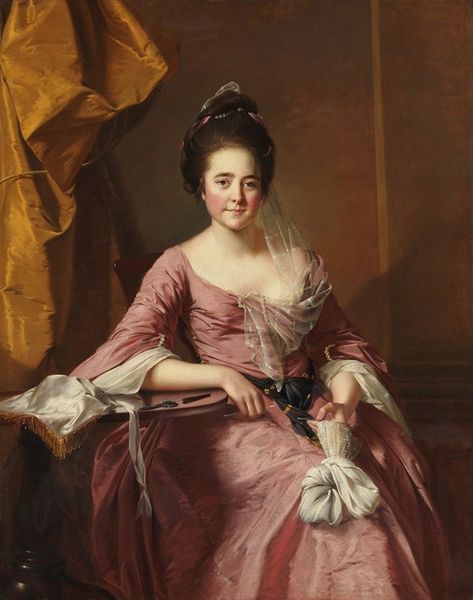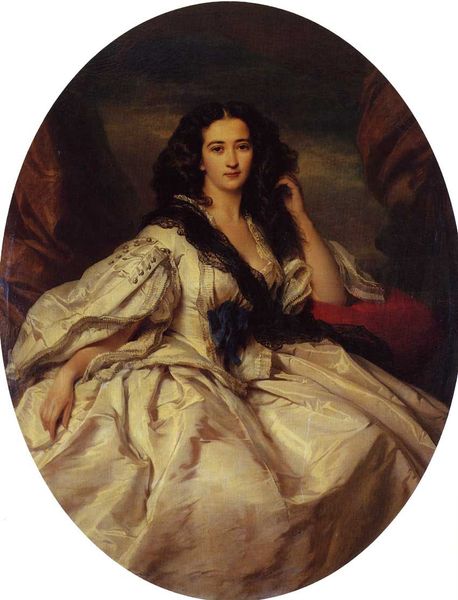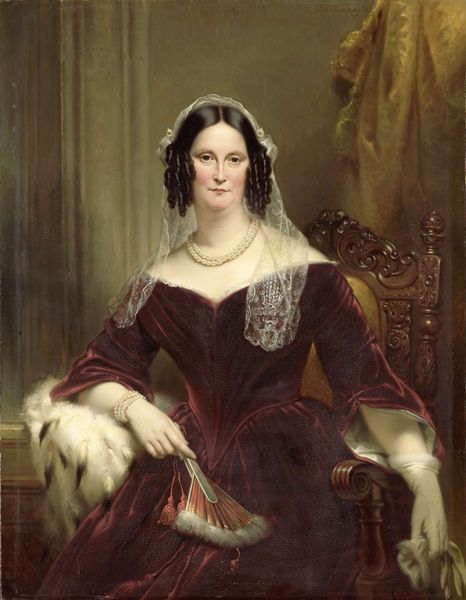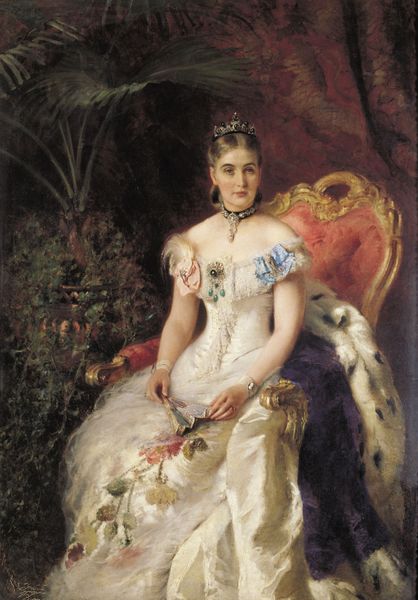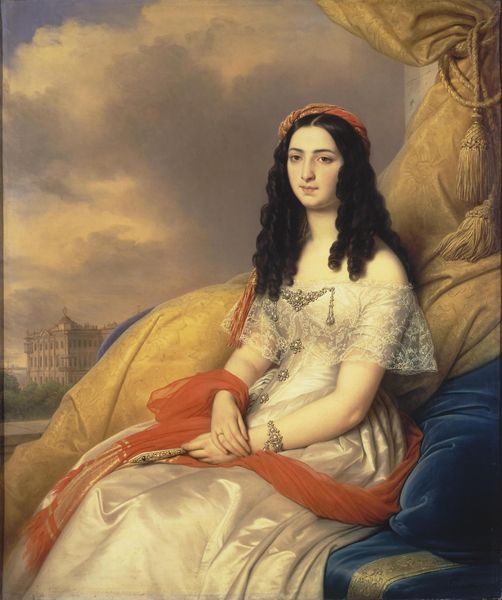
painting, oil-paint
#
portrait
#
painting
#
oil-paint
#
figuration
#
romanticism
#
history-painting
Dimensions: 249 x 157 cm
Copyright: Public domain
Editor: This is Christina Robertson’s “Portrait of Grand Duchess Maria Alexandrovna,” created in 1848 using oil paint. The dress is incredible! The sheen and the folds of the fabric seem so realistically rendered. What strikes you about this painting? Curator: Considering a materialist approach, I immediately notice the implied wealth embedded in the representation. It’s not just the luxurious dress itself, but also the clear indication of the labor required to produce and maintain it. Look closely—the fineness of the fabric, the lace, the pearls... these all speak to a system of production reliant on extensive resources and human toil. What does that suggest to you? Editor: I guess it’s easy to get caught up in the beauty, but it hides a lot about the social structures in place at the time? Curator: Exactly. This isn’t simply a celebration of aristocratic beauty, but also a potent symbol of class disparity. Note also the placement of the subject against a vague, natural backdrop juxtaposed with that ornate, velvet-draped table; this contrast emphasizes the constructed nature of Maria’s image. How might the choices in materials and setting have helped cement her social standing? Editor: By visually linking her to both "nature" and to man-made luxury...kind of like saying she's part of the natural order of things and inherently deserving of that status? Curator: Precisely! The portrait becomes a form of propaganda, reinforcing existing power dynamics. Robertson’s skill isn't just in capturing a likeness, but in manipulating materials and visual cues to perpetuate a social narrative. It also poses an important question of how a woman artist navigated a patriarchal social environment: was she subverting or supporting these class disparities through her artistic practice? Editor: That's a completely different way of looking at it than I usually do! I'm going to pay closer attention to the materials used from now on. Curator: It’s important to remember the inherent connection of all artworks to its mode of production. Approaching it with such in mind opens exciting new angles.
Comments
No comments
Be the first to comment and join the conversation on the ultimate creative platform.
